8½: Federico Fellini’s Seminal Masterpiece Deciphered
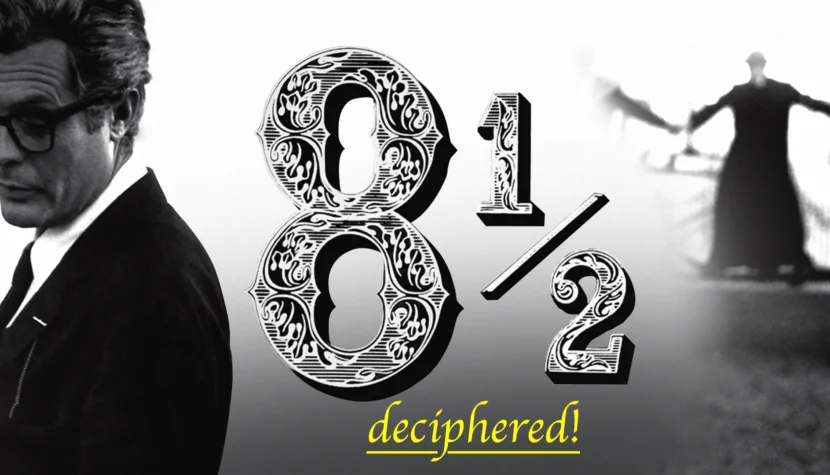
…– and which remained in the works of this screen magician until his death, was dormant within the artist from the very beginning, gradually awakening from this long slumber and subtly revealing itself in his early films, unobtrusive to our attention.
It’s surprising that 8½ could fit into each of these segments individually and be viewed within their frameworks. For instance, we could watch Otto e mezzo as Guido Anselmi’s film, where the main character is Guido’s alter ego. We might assume this is what the film would look like if it were made. Or perhaps it has already been made and is not a science fiction film with a rocket backdrop but a “film about a film” that Guido Anselmi made, and we are watching it? One of the characters, the writer Daumier, comments on Guido’s film as if he were talking about the characters in 8½, the film he is part of:
You see, on the first reading, you notice a certain lack of ideological problems, or if you prefer—philosophical premises, which makes the film a series of unsubstantiated episodes, although quite amusing in their ambiguous realism. Do these characters make us think? Do they want to fill us with horror?
Daumier’s statement serves as a form of self-ironic director’s commentary. We can also interpret the film traditionally, with Guido as a creation invented by Fellini, or in another way—Guido is Fellini, the director himself being the hero of his own film (indicated by numerous autobiographical elements and the protagonist’s style—hat, cape, and even manner of movement). The director’s mastery is evident in how these segments overlap without conflicting with each other. 8½ is a dream within a dream. It is simultaneously Guido’s film and Fellini’s film, which opens up to an intellectual game with the viewer.
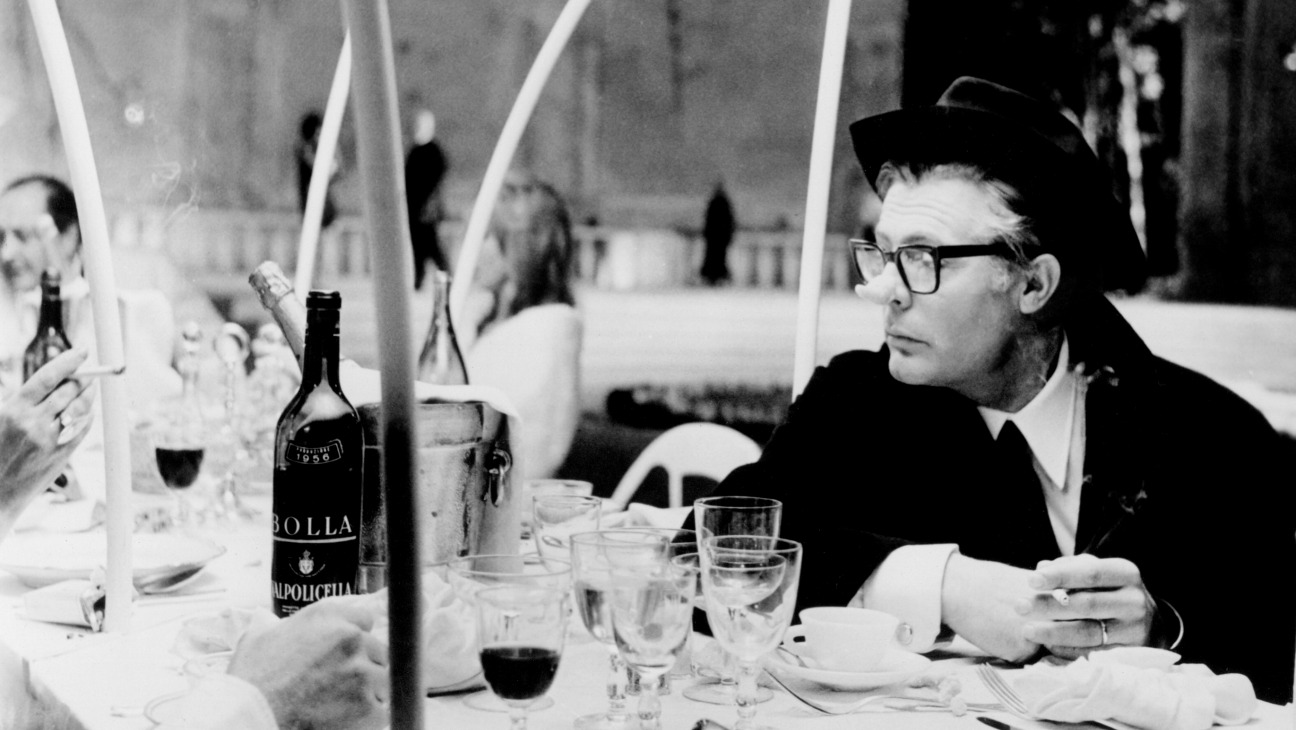
Filmic Licentia Poetica
According to Salska-Kaca, the constitutive functions of poetic communication in film are the emotive and autotelic functions. Simply put, the most important for a poetic film are evoking emotions and clothing the film in a specific form (depending on which of these elements prevails in a given film, we divide poeticism into warm and cold). In 8½, both these elements—emotiveness and autotelicity—interact with each other, one flowing from the other and vice versa. In Fellini’s masterpiece, the emotive function is based on the internalization of the presented world (which entails form). It can be said that this presented world is generated by the main character—it is his emanation and image of his soul. This internalization of the screen reality, assuming its deformation, conditions the emphasis on the autotelic function in the message. To convey the protagonist’s complex inner life, a specific form—highlighted and non-transparent—is needed. In the film, there is not a single scene that is not filtered through Guido’s psyche.
Narration
Thus, it would not be mistaken to say that the key to understanding the phenomenon of poeticism in 8½ and in film, in general, will be simply subjectivity. Mirosław Przylipiak, in his article “On the Subjectivization of Film Narration,” lists seven ways of conducting personal narration in film, and significantly, all of them appear in Fellini’s masterpiece.
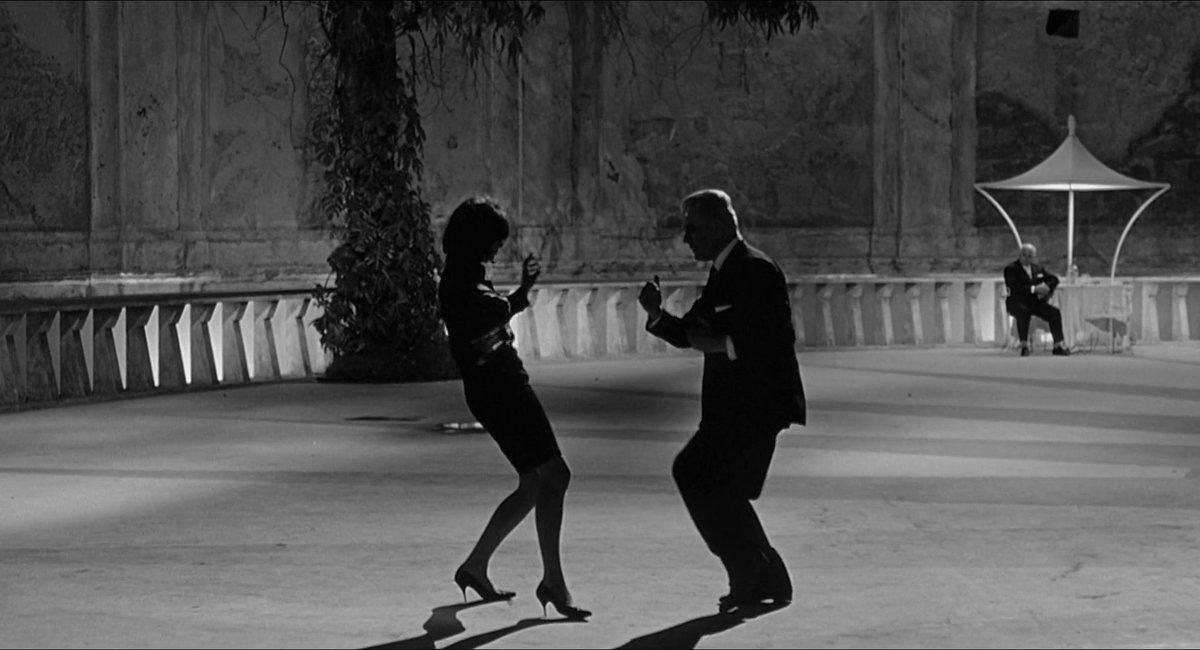
Point of View
This technique involves creating within a few shots such spatial relationships that one—or more—shots contain the image seen from the position of a character in the diegesis, writes Przylipiak. Interestingly, from the very beginning of the film, we see the world through Guido’s eyes—from the dream sequence, through the scene after waking up, until the moment the character is in the bathroom. We do not see his face because either we are viewing reality from Guido’s point of view, or we see the back of his head, or something constantly covers his face (sheet, shadow). Only when Mastroianni enters the bathroom and looks in the mirror do we learn what the main character looks like. It’s as if the director wants to announce right away that we won’t see anything in the film that Guido doesn’t see. That he is the intermediary through whom we will experience all events. There are many scenes in the film where the camera is guided from the protagonist’s point of view—for example, the shot in the baths when the hero goes to meet the cardinal. Various characters block his path, offering advice or asking for intervention with the church dignitary.
Internal Monologue
This second technique, which long enjoyed esteem among film theorists and for the same reason as the first, is well-suited to classifications and explanations. Practitioners, however, treat internal monologue with suspicion. It is often believed among them that it is a less subtle and too easy technique. When there is no idea to show the character’s interior, then ineptitude, lack of imagination is patched up with internal monologue.

Fortunately, Fellini lacks no imagination, so the internal monologue is not a frequent solution in 8½. We encounter it in only a few scenes. For example, when Guido finally finds himself alone in his hotel room after a whole day, we hear from off-screen: Inspiration crisis? And if it is not temporary at all? And if it’s the ultimate downfall of a liar devoid of genius and talent? We can also consider scenes where the protagonist talks to his ghosts as a form of internal monologue. There might be a debate about whether talking to hallucinations is a dialogue or a kind of monologue. I would lean towards the second option, as these “ghosts,” as Guido calls them, are just projections of the feverish psyche of the protagonist. It is thus a kind of conversation with oneself, a monologue or soliloquy.
Point of Hearing
[…] It is the place within the film’s world from which the sound is conveyed to the viewer […]. In one of the scenes, Guido hums a musical motif that recurs throughout the film. This is undeniable proof that we are constantly hearing the music that actually resounds in the protagonist’s mind. I feel that this technique brilliantly reflects the mechanisms of our psyche. We often say that a song we’ve heard somewhere “follows us” and keeps ringing in our ears. In 8½, we encounter various variations of pieces by known composers (including Wagner), which sometimes overlap (e.g., pieces of rumba woven into Nino Rota’s music, first heard when Saraghina enters the scene), creating strange mixes or surprising us with an unexpected pause (as in the scene where Guido has his first vision). It is Anselmi’s psyche that controls the music in the film. We hear what is currently ringing in the protagonist’s head, reflecting his state of mind.
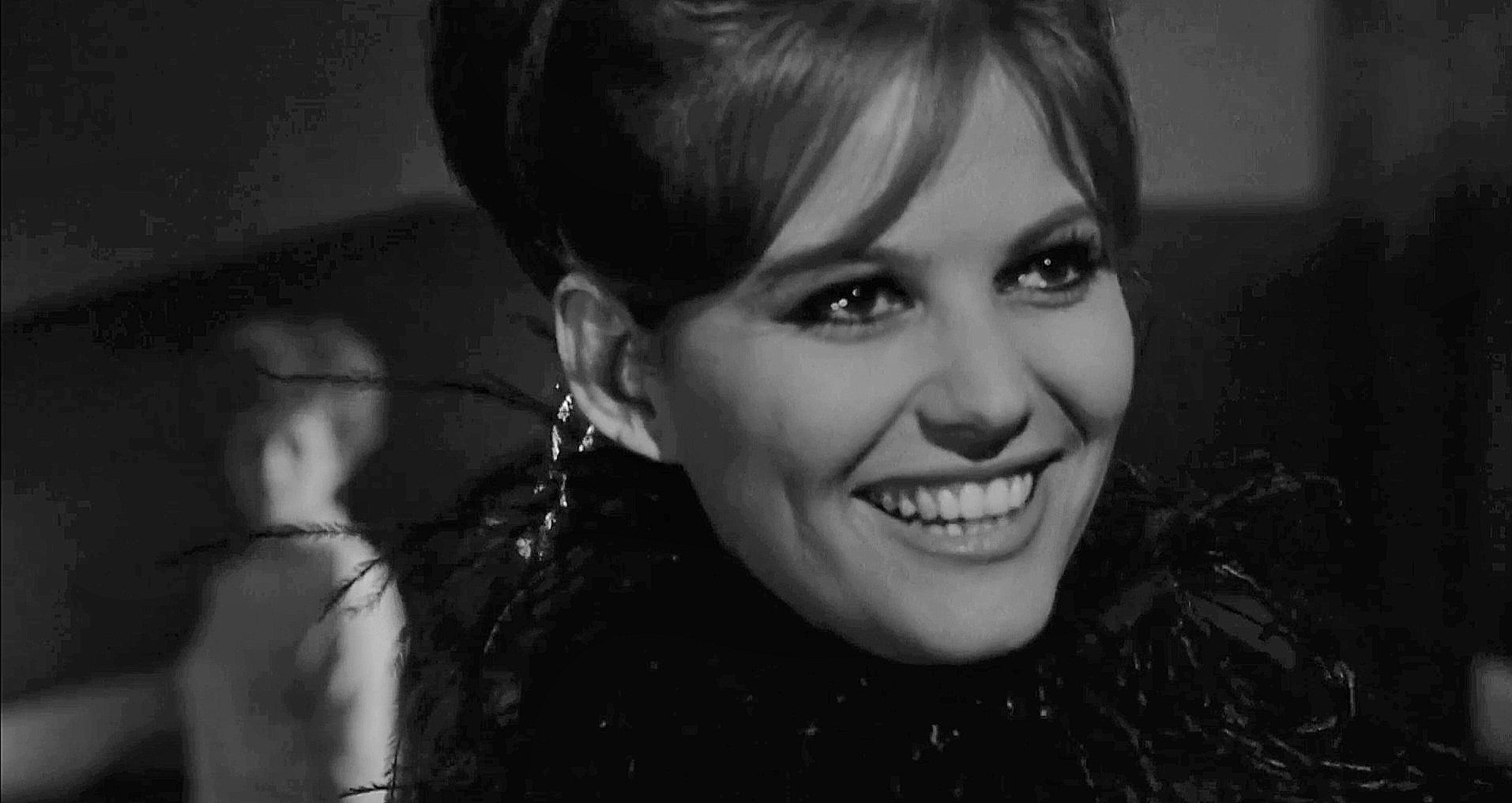
Freely Dependent Subjectivity
[…] These are films that give the viewer an irresistible impression of subjectivity, though they do not use any aggressive procedures. It is known that one way to strongly saturate the film’s world with a character’s personality is simply through their sufficiently long and intense presence on screen […]”
8½ is freely dependent subjectively in the sense that there is no scene without Guido. We thus adopt the character’s horizon of information as our own. The protagonist (aside from other subjectivization techniques used in the film) is a narrator in the sense that he acts as a kind of “data filter” through which the viewer constantly perceives, allowing themselves to be drawn into the world created by Fellini.
Mental Images
[…] The effect of a mental image is almost always achieved through the deformation of the objective, with the word ‘objective’ understood to include both specifically filmic conventions that possess the status of objectivity and the viewer’s beliefs formed outside the cinema about what is possible and probable […].
Watching the Italian master’s work, we can feel that the reality depicted on screen is so distorted that it borders on a dreamlike hallucination. It is as if we are observing reality through the eyes of a dreamer or a mentally unstable person. Every element of the depicted world is a projection of Anselmi’s consciousness (or subconscious) – from the set design to the characters’ behaviors.
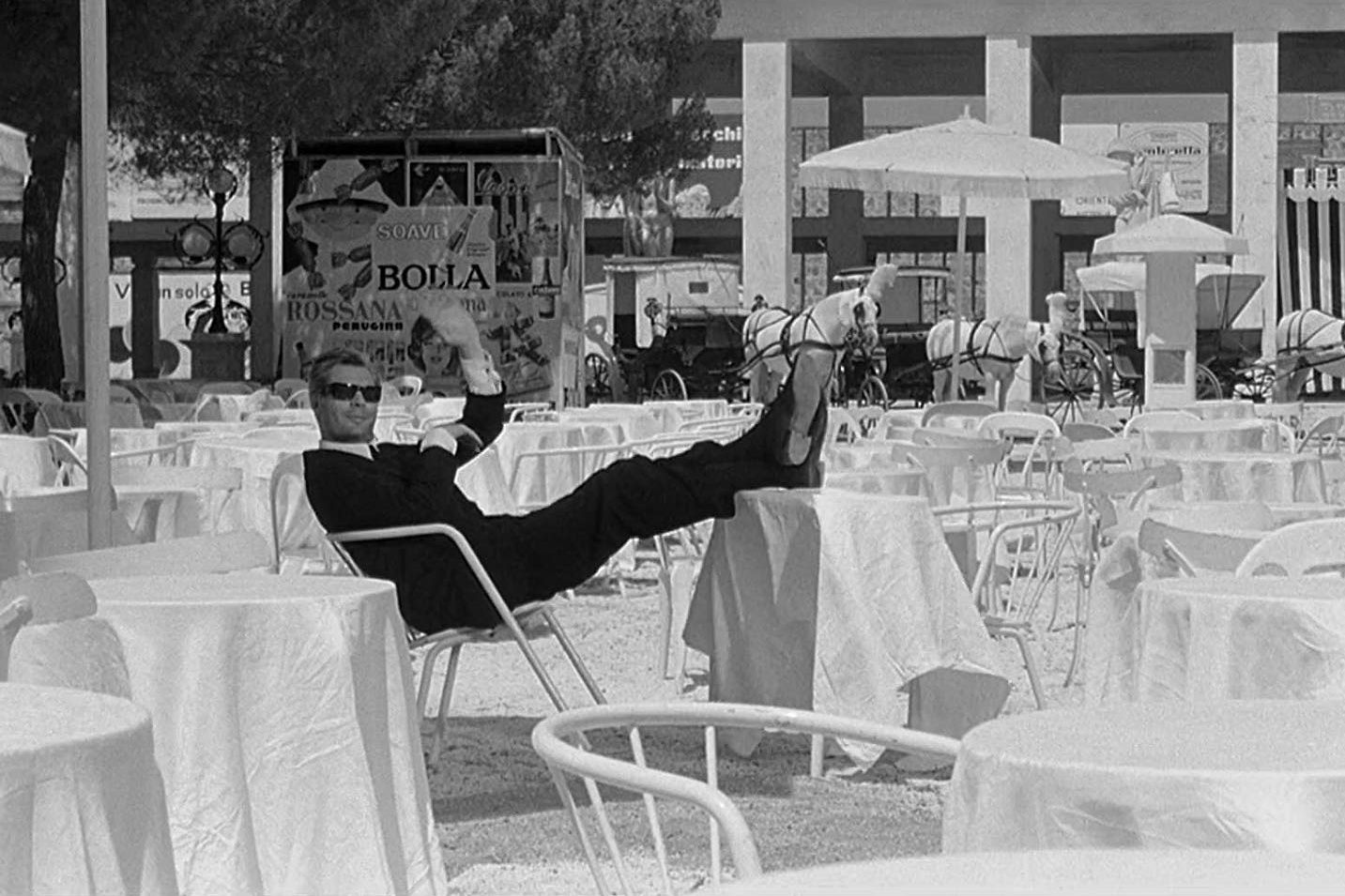
Starting with the set design, each scene is a mirror reflection of Guido’s mood, each is somehow spontaneously “staged” by the protagonist’s subconscious. Take the scene at the spring. The movements of the extras are unnaturally artificial, synchronous. The characters move in time with Wagner’s piece, as if they had “learned” the choreography beforehand. Finally, Guido appears – the unconscious director of this amazing spectacle. He stands in line for the watering place, looking around, bewildered by the peculiar sight. Another intriguing scene is the spa treatment, with a set design styled as ancient baths and actors as Roman citizens. The characters are wrapped in long togas, their silhouettes shrouded in thick steam. There are many examples. The stark interiors of the Catholic school, which Guido remembers from childhood, were dubbed “Kafkaesque expressionism” by Kornatowska. An observation I find very accurate. This heavy, Kafkaesque atmosphere is palpable when the strict priests judge the boy and punish him for associating with the local prostitute. The camera work in the final scene is also interesting. Anselmi, during the press conference, talks to his “ghosts”. The camera is free, soaring over the set like the specters haunting the protagonist. As I mentioned earlier, the retinue of characters surrounding Guido is one large mental image. Just recall the gloomy cardinal, who solemnly quotes Origen in response to the protagonist’s confession: Your Eminence, I am unhappy!. While the protagonist in his film wishes to present simple truths, to say something very straightforward – Daumier, representing the artistic conflicts tormenting the director, comments on the script in an overly intellectual and convoluted manner, continually deepening Guido’s artistic impotence.
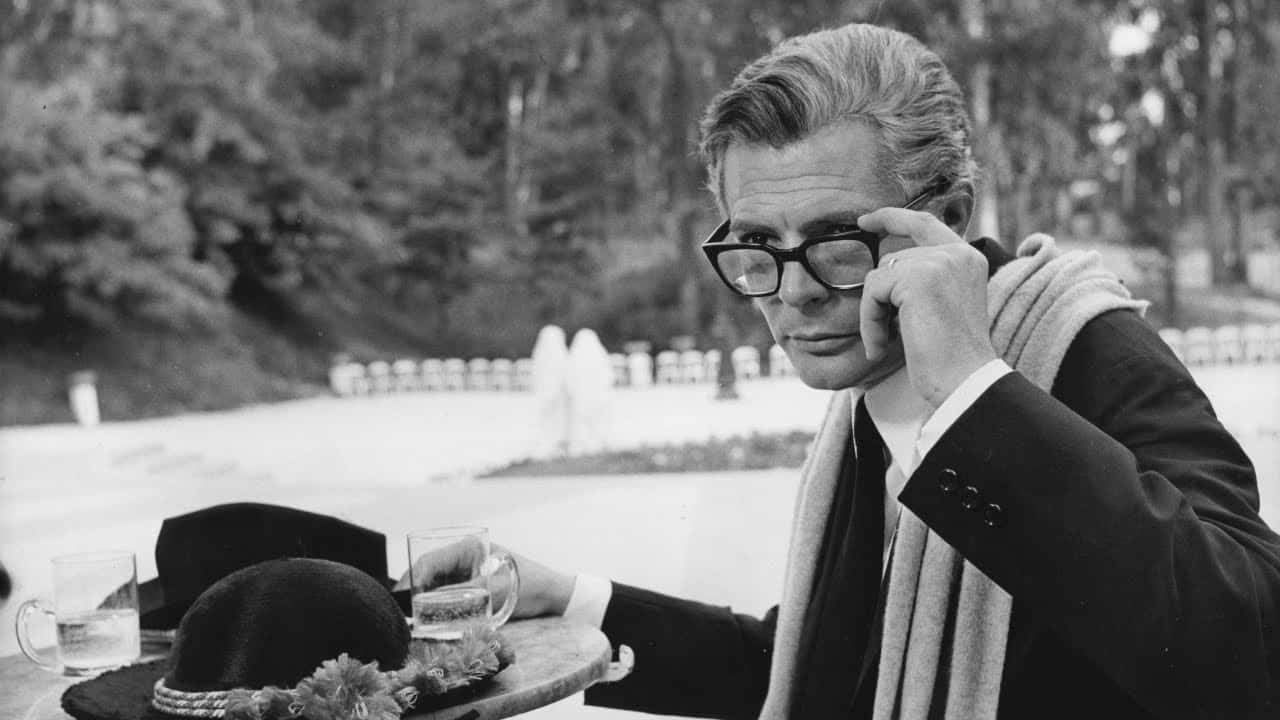
Frame
[…] Strictly speaking, these are the boundary images, those images in a film that separate the real parts from those motivated by personality […] In contemporary cinema, clear separation of subjective from objective parts is no longer essential and is often omitted. Nevertheless, the frame remains perhaps the most effective way of informing about the status of a sequence, whether we are dealing with a dream, a hallucination, a memory, a vision, etc. […].
Abstracting from the fact that in “8½” we cannot speak of a “subjective part” and an “objective part” since there are no objective parts in the film, the image involves these subtler types of framing. The memorable and highly lyrical scene where Guido’s deceased mother appears in his bedroom and takes him to the realm of his own dream serves as an example.
Discourse
[…] This technique realizes itself by breaking the illusion of the depicted world through a declared transformation of the film and each of its elements into a statement […].
8½ is a discourse in the sense that I have already mentioned. Primarily, it is a “film about a film”, an autotelic statement. Of course, being a “film about a film” alone is not enough to break the illusion, but if 8½ is a film about 8½, the entire depicted world is unmasked. As I indicated earlier, in one scene, Daumier comments on the characters in the film, within whose diegesis he functions as a character himself, which means his horizon of knowledge can (though it does not have to – it all depends on interpretation) even coincide with the horizon of the audience’s knowledge. In such a situation, the boundary between characters and the audience becomes blurred, and the created illusion on screen shatters, simultaneously expanding its interpretive potential.

Based on Przylipiak’s theory, it can be proven that 8½ is subjective in every respect, as it employs all the above techniques.
Why is this subjectivity so crucial for poetic communication? Poetry is a kind of reflection. A personal reflection, an intimate confession of the lyrical subject. Everything we read in a poem is filtered through the sensitivity of this supreme “I”, which speaks through the poetic message. This is why subjectivity and individuality are essential here. It is the same in film. The more personal the director’s message – the more subjective the screen vision will be. Let’s return once again to the two primary functions of poetic communication mentioned by Salska-Kaca. It is this broadly understood subjectivity that gives rise to both. The filmmaker-poet’s message will be intensely personal, and therefore full of strong emotions (the emotive function). On the other hand, subjective perception of reality will create a subjective form – one that will deeply shake the viewer and not allow them to forget it during the screening (the autotelic function). Of course, practicing screen poetry gives the director a much broader scope of creative freedom than the prosaic film material. This is why the first sequence of 8½ best illustrates the emotional state Fellini was in at that time – the artist wants to be free, to float in the clouds, though he realizes that in the case of film direction, this is extremely difficult.
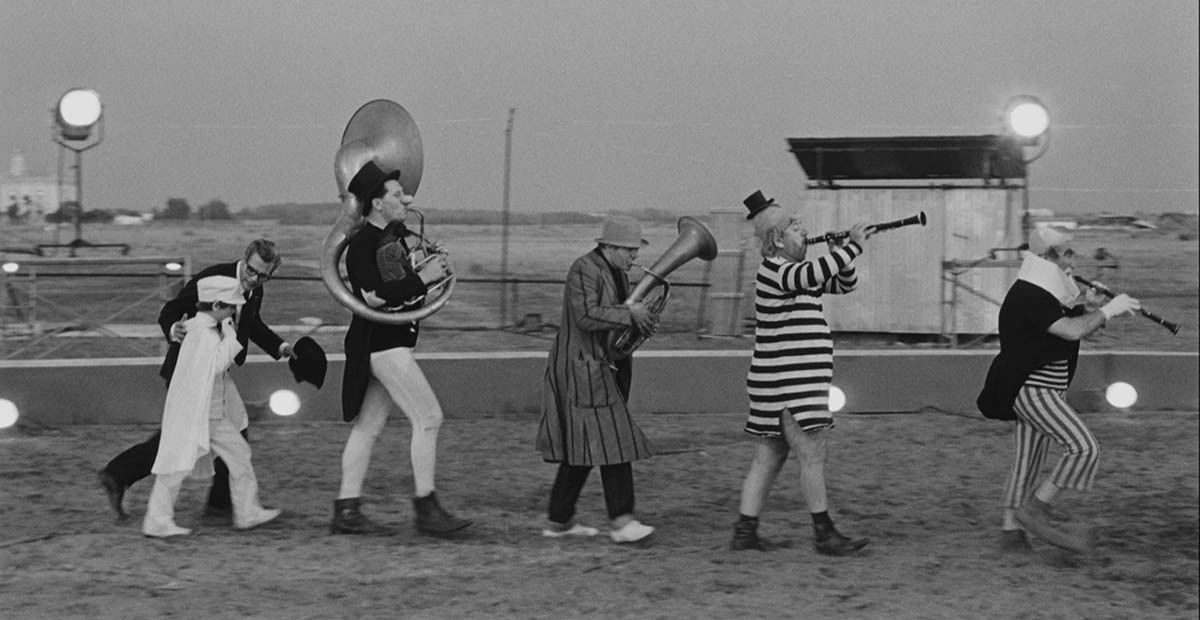
Federico Fellini – the Cursed Poet?
It is surprising how the film subtly hints at comparing Guido (most likely Fellini himself) to Arthur Rimbaud. In one of the final scenes, Daumier says:
We suffocate with words, images, and sounds that shouldn’t even exist, that come from the void and aim for the void. From artists worthy of this profession, we expect only one thing – an act of loyalty. To learn to be silent. Do you remember Rimbaud’s work?
The finale of 8½ offers us two remedies for creative impotence, both associated with the figure of Rimbaud. The first is silence. The artist should not “intensify this chaos,” as Daumier says, referring to the worthless, “miscarried” creations that can come from a burnt-out artist. Only a great poet can fall silent when there is nothing more to say. Just as Rimbaud did in 1875 after writing Illuminations. The second remedy is the cult of primitivism, symbolized in the film’s finale by the circus parade, consisting of all the characters from 8½ – both those from the present timeline and those from memories, dreams, and visions. At one point, Guido himself becomes part of this fantastic procession, choosing primal simplicity (film art originated from the circus). This cult of primitivism accompanied Rimbaud throughout his life, leaving its mark on his work. It is evident in such works as My Bohemia or The Drunken Boat.

This aspect is also visible in Fellini’s work, who (like Rimbaud) views the world with the disarming honesty of a small child. Fellini never judges. He is an attentive observer – exposing human behaviors and passions that torment every soul, yet simultaneously aware that they are one aspect of humanity – the animalistic and primal one (most clearly seen in the example of Marcello from La Dolce Vita or young Guido and his artificially repressed fascination with Saraghina). In Agnieszka Holland’s Total Eclipse, Rimbaud (Leonardo DiCaprio) says something that perfectly captures the philosophy of the French poet’s life:
I realized that to become the greatest poet of this age, I must experience everything. It was no longer enough for me to be just one person. I decided I would be everyone.
It is astonishing that Guido, in one of the final scenes, says something quite similar:
No, this hero (meaning Guido=Fellini) is not capable of this. He wants to have everything, to give up nothing. He changes his desires every day because he fears he might miss the right one and dies of exhaustion.

